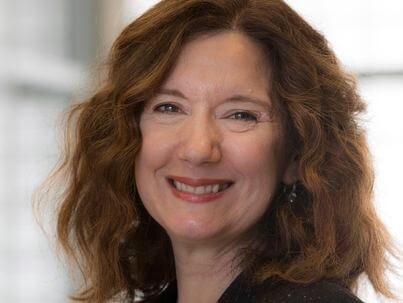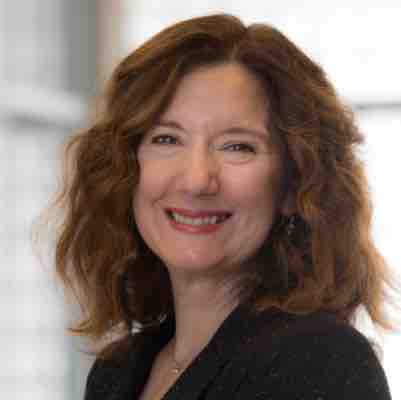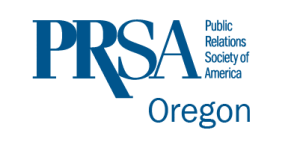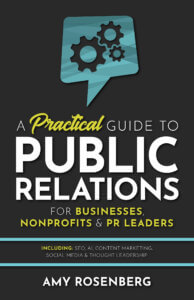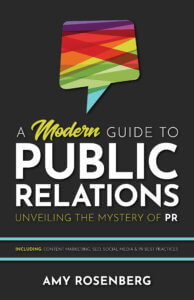Breaching the divide: A journalist-turned-marketer shares her PR insights
Michelle Brence has always had a knack for sniffing out a good story. It served her well in her 23-year career as a journalist, which she began as a part-time copyeditor at The Register-Guard in Eugene and later advanced to senior editorial roles at The Oregonian. In her life as an editor, Michelle loved telling meaningful, important stories, and her work was lauded when a piece she edited on drug cartels in Oregon was a finalist for a Pulitzer Prize. Today, she’s no longer working as a journalist, but she’s still telling important stories as the digital content strategist for OHSU. Michelle recently sat down with us to talk about navigating the transition from journalism to marketing, the surprising similarities she’s discovered between the fields, and what she’s learned along the way.
In the Newsroom
Until Brence made the jump to marketing, journalism was the only career she had known. Early on, she worked on the copy desk at The Oregonian, and she recalls that time with fondness. “The copy desk at The Oregonian was a really great group of snarky, profane, incredibly smart people.” There, Brence and her colleagues were the last people to sign off on each day’s paper before it was printed. In addition to writing headlines and subheads, she was often the last line of defense against errors and omissions. “I saw some horrific mistakes almost get in the paper many times, and a few slipped in,” she noted. Brence recounted a story about a time when she was working on New Year’s Eve and jotted a question for the print shop on a page she was copyediting. She was horrified the next day when she saw that the print shop staff had misinterpreted her question, adding a question mark to the “Happy New Year” banner at the top of the page that lent a quizzical note to the standard holiday exclamation.
A Career Shift
With mixed feelings, Brence left The Oregonian in January 2016, largely in response to the precarious state of the print journalism industry, where staff reductions have become commonplace as newspapers increasingly rely on syndicated content in an effort to cut costs and stay afloat. With two kids to put through college and retirement to fund, she realized that she needed to prioritize her family’s financial stability. “I woke up one day and just realized, it’s now. It’s time to go.”
Surprising Similarities
Once Brence decided to leave, her new position was the first one that caught her eye. It helped that the hiring manager wanted to hire a journalist for the digital content strategist role. While that may not seem intuitive, today’s journalists have more in common with marketers than one might expect.
“There used to a be a 20-foot wall between any kind of thought about marketing and journalism. We prided ourselves on not even caring about how our work helped or hurt sales. But as journalism moved into a digital space and we could see what our audience wanted or didn’t want, and as our financial fortunes started to fall, we had to get a lot more savvy and break down those walls. So, it was a lot more familiar than I expected it to be. Understanding what audiences want was something I was very comfortable with. I had a lot more skills than I realized beyond wordsmithing and information gathering,” explained Brence.
At OHSU, Brence is moving into a role where she’ll be overseeing all digital copy geared toward patients, including blog posts and web pages about conditions and treatments. She’s also working to streamline the existing body of reference content to make it easier for patients to find the information they need to be informed partners in their own healthcare. Her journalism skills continue to serve her well as she researches and writes about medical conditions and treatments. “I start immersing myself in the condition, then interview doctors, and then I ask them for papers and presentations that they give to other doctors,” she said.
Brence sees other parallels between her two careers. In marketing as in journalism, she stresses the importance of not telling people what to think. “Just lay out the facts and let people decide for themselves,” she said. “I’m not pitching a product; my job is just to uncover what we have and present it in a way that people can find it. I try hard not to use marketing language,” she said.
“You go into journalism with a sense of mission and purpose. You work ridiculous hours and the pay isn’t really that great, so you have to love it. I feel incredibly fortunate to have landed at another mission-driven organization that makes the world a better place.” Click here to read Brence’s recent article about the groundbreaking brain surgery performed on a child at OHSU.
Cultural Differences
Brence experienced a bit of culture shock when she transitioned to marketing, and admits to still feeling like a fish out of water sometimes. Coming from a newsroom peopled by snarky potty-mouths and quirky characters, the culture of politeness in marketing took some getting used to. In marketing there’s more emphasis on networking and social niceties, whereas in a newsroom the prevailing sense of urgency leads to more terse communications. “It was very common for me to get an email from my boss that said ‘look into this.’ When I got to OHSU I realized that you need to say hello first.”
Another difference Brence cited pertains to competitiveness. “We had news meetings a couple of times a day and you would find yourself competing with other editors to get your story on the front page. You got used to getting asked very pointed questions about why your story should be there.” While editors are conditioned to answer the questions “who cares?” and “why is this important,” Brence stresses that marketers could benefit from adopting a newsroom mindset.
PR Pro Tips
Having worked as both a journalist and a marketer, Brence has a good sense for how to catch an editor’s eye with a press release. Here, she shares her dos and don’ts:
- Don’t put your needs first. “I was shocked at how many pitches I got that included, ‘hey, I really need to get this out there.’ That’s your problem, not mine.”
- Don’t host a charity event for the sole purpose of drumming up publicity.
- Don’t ask for free publicity. Always keep the publication’s audience and focus in mind, and tailor your approach accordingly.
- Don’t write overly long press releases. Essential information should be in the first two sentences. Assume that the editor will spend 15 seconds reading your press release, so get to the point.
- Do include contact information for both the PR representative and an interview source.
- Do get to the point quickly, and explain why the product/service/event is relevant to the publication’s audience.
- Do be familiar with publishing schedules, and understand that deadlines are ongoing.
- Do give sufficient lead time, but not too much.
- Do be helpful, but hide the fact that coverage will help you.
A quick word on talking to investigative reporters
Finally, Brence offers this advice to marketers who pick up the phone to find an investigative reporter on the line: Don’t lie. “Usually when people get tripped up, they lie about things that are publicly findable. If you have something out there that’s bad, just get it all out there at once. Face it, and tell the truth.”
About the guest: Michelle Brence
Michelle is the digital content strategist at OHSU. Prior to her current role, she was an editor at The Oregonian, where she led an award-winning team of reporters.
Connect and follow Michelle on social media:
PR Talk is sponsored by dapulse
In such a fast-paced, multi-faceted work environment, it can be tough to stay on top of everything. dapulse is the collaboration tool trusted by businesses of all kinds to help cut down the clutter and streamline productivity. Learn more at dapulse.com and signup for a free trial. You’ll see in no time why so many teams around the world are choosing dapulse for their project management needs.
PR Talk listeners can use the coupon code BetterExecute for a 15% discount.
This episode of PR Talk is brought to you by PRSA Oregon
Throughout Oregon and Southwest Washington, PRSA provides members with networking, mentorship, skill building and professional development opportunities – whether you are a new professional fresh out of college or a skilled expert with 20 years in the industry. Check out PRSAoregon.org for more information on how membership can help you grow and connect.

